A disused railway running through Essex that closed 50 years ago is now a country walk that offers some lovely views, detours and some bacon.
The walking route follows the former Bishop’s Stortford–Braintree railway, which opened in 1869, mainly as a farm freight railway with some passengers. It stopped carrying passengers in 1952, and completely closed in 1972 – that’s 50 years ago. The tracks were lifted and the route opened as a walking trail, officially known as the Flitch Way country park, after the long tradition of bacon being handed out at Great Dunmow every fourth year.
As I was in Great Dunmow for the Flitch Trial, I picked up the route there to walk towards Stanstead Airport, for a train back to London.
I was going to look for Dunmow station, but it has been utterly wiped out, so off to find the Flitch Way instead. A large signpost at the entrance leads to a fork in the path, and after a bit of checking, it’s the right fork to take and you’re plunged into heavy canopy woodland, with the roar of the nearby main road slowly fading away as you pass deeper into the country park.
A long section of the path runs alongside a stream, and there’s a good wooden walkway to follow, and a fallen tree at the far end and a necessary detour into the mud to get around it reminds us why the wooden path was created.
There are some signs dotted along the route pointing out the many types of birds to be discovered along here, most of whom make their presence noticed when they startle at the sound of a human walking along and fly off with their flapping wings causing a racket as they bash tree branches out of the way. The human is a lot quieter.
It’s not long though before you’re into a deep cutting in the land built for the railway and the first of many brick bridges that line the route. On a hot day, it’s more pleasant to stay in the shade and the walk regularly alternates between the two along its entire length.
You will have to make one major detour here, as there’s the A120 to get over, so the path detours down an old lane and over a 6-lane wide road carrying the cars and lorries than replaced the railway, and then a long winding path to get back onto the Flitch Way.
The rejoining point is worth stopping for a moment though, as you’ll see a good brick and stone house, and that’s the remains of the Easton Lodge railway station. The station was built after the railway opened, and was paid for by the Earl of Warwick, who owned the nearby Easton Lodge, for his personal use, but was also open to the public. The railway platform has been demolished, but the crossing keeper cottage remains.
Back onto the Flitch Way, and it’s a long straight walk in the countryside with fields on either side.
Something I didn’t think I would be able to do, as the railway passes over a road seemingly without a convenient way down is visit the nearby church of All Saints Little Canfield, but as it happens, there are steps down from the bridge, and about a 10-minute walk south takes you to the church. It’s a pretty little church, with parts dating back to the 12th century and very much still in use from the amount of children’s stuff in one corner. Most of the internal decoration is from the mid-1850s, and was recently renovated.
Back to the old railway, and a chance as you’re here to see the railway bridge from below as well.
Not much further along, the railway dips into a slight cutting, and fortunately, the trees return in abundance to provide shade, and it’s not long before you’re at the next station along the line, at Takeley. Here a lot still remains to look at from the station building to even the platform as well. You can wander around the station if you get up onto the platform, although at the time of visiting, it looked as if a lot of builders work was going on inside.
Back to the railway, and on to the final stop for me, the Stane Steet Halt, which was just a short platform and nothing else. It was removed, but a few years back locals restored a bit of the heritage with a short platform and sign in memory of the lost station here.
Although you can carry on to the edge of Bishops Stortford, this is the point where I stopped, as there’s a side path that takes you down to the road where I walked back to Takeley, via the pretty church of Holy Trinity, Takeley, and promptly missed the hourly bus back to Stanstead airport. Oh well, it’s only an extra 40 minutes, although a sign of how tired I was by now was that I never caught up with the person also walking the same route about 100 metres ahead of me. As an exceptionally fast walker, this is almost unheard of.
Oh, and why are the entrances to major airports pretty much non-existent for pedestrians?
As a walk though, I had caught the bus to Great Dunmow in the morning, and it was a pleasant diverting way of getting back in the afternoon. There’s not much railway heritage to spy, but loads of wildlife, especially at the start of the walk, and the two churches to discover are a delight. There’s quite a lot of seating dotted along the route from recently added benches to some old possibly ex-railway sleeper benches that can just about be sat on if you push the nettles away.
There’s also a place you can stop off for refreshments if needed at the first church, a place called Hoagies, or when back at Takeley if you miss the bus and don’t want to walk any further.
If you fancy the longer walk from Braintree, then you get a lot more railway heritage at Rayne station, where they have a cafe in the old station house and a carriage on the tracks. That longer route might be better for cyclists, or split into two trips for walkers.




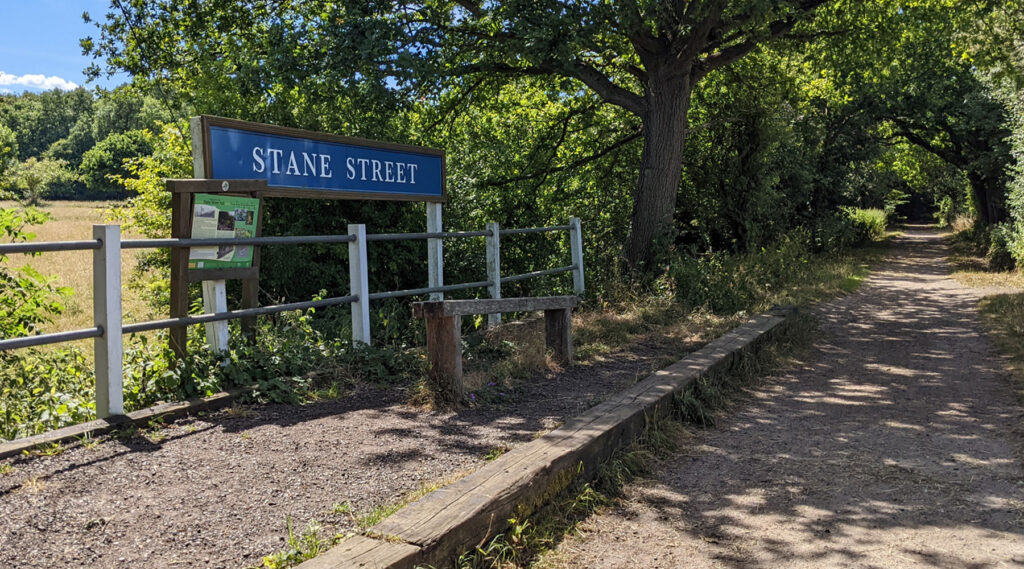



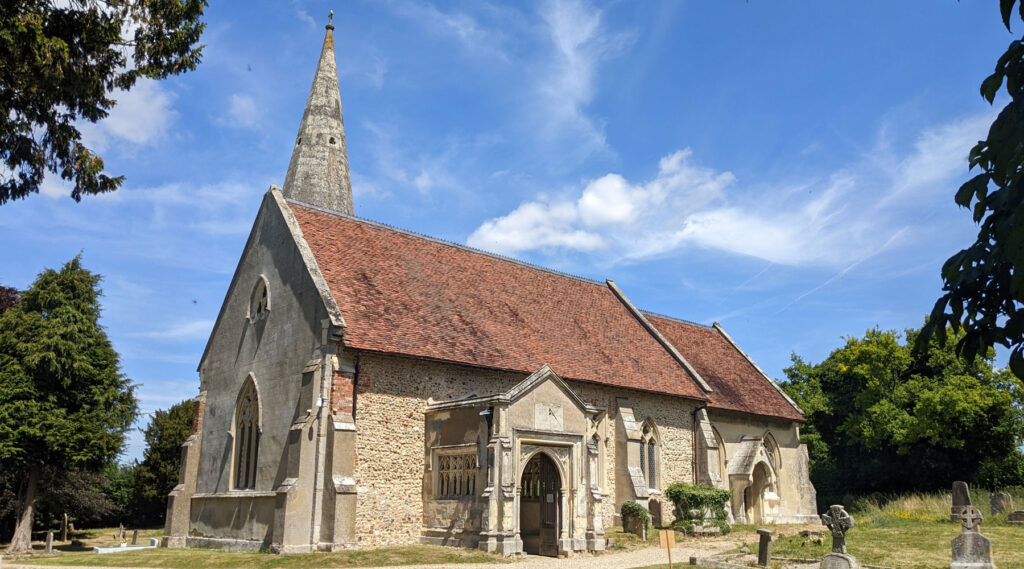
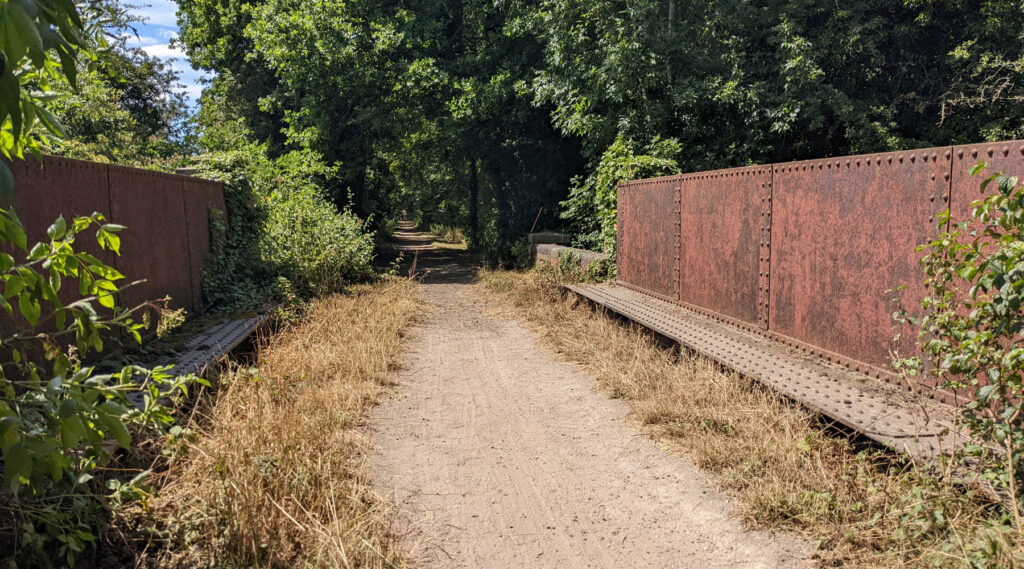
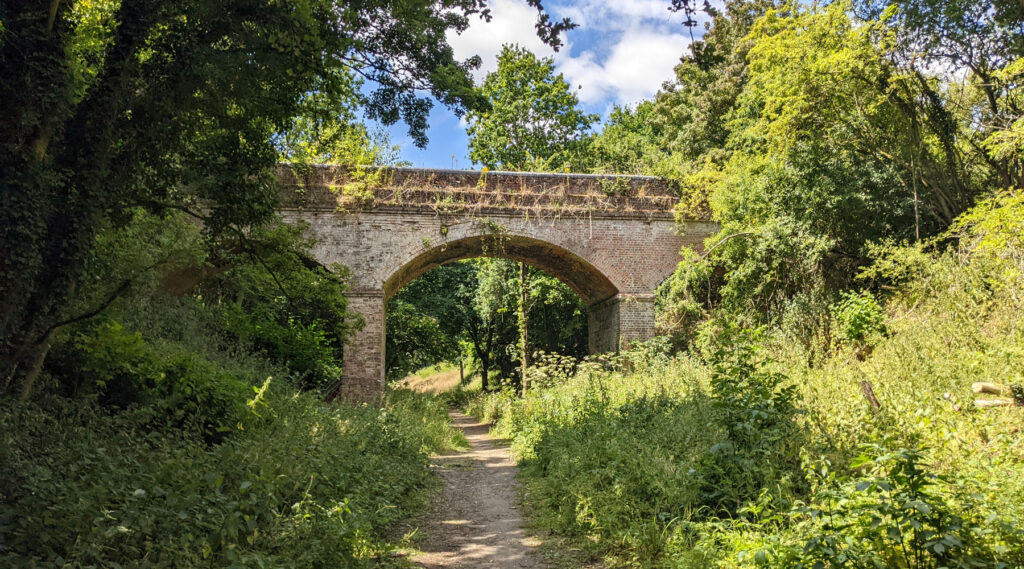
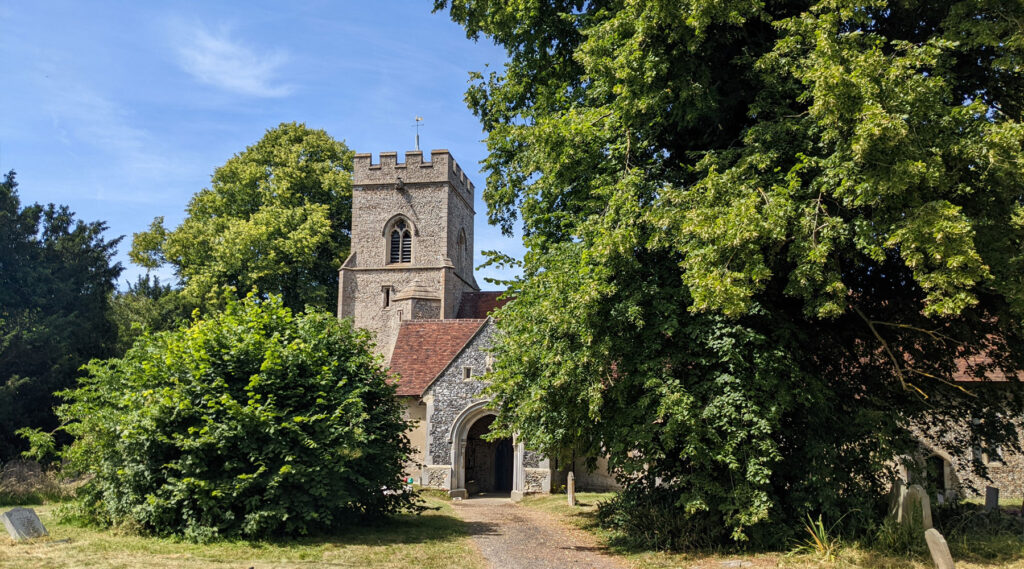






Just a minor correction all round “Stansted” not “Stanstead”. But thanks, I’m a local and although I knew this existed I hadn’t been for an investigation. Will have to get out and about to visit
Thank you for this. Many “Rails to Trails” routes are dull, hemmed in cuttings and with few views; this looks interesting and we will follow up.
Sounds great, I’ll definitely be taking a hike/bike ride along this route.
I have walked this several time from Braintree to the M11 and back and yes its nice it the warm summer months but I would hate to try it in the middle of winter, way to much mud.
Seriously?
Got wellies haven’t you?
It’s Stanstead (with an A) Abbotts but Stansted (no A) Mountfitchet and by extension Airport too. As a Stortford boy it took me years to realise this!
Loved the travelogue (walkalogue?). I’m a fan of railways since my boyhood, born in a railway junction town 116 miles north of Dhaka, Bangladesh. It was the most exiting thing everyday to watch the passing trains pulled by steam and diesel engines. I used to collect small beautiful pebbles along the way.There weren’t any disused railways in and around my home town, Jamalpur (opened under the Assam Bengal Railway’s in 1911) but went to see a few in the remote parts of Sylhet passing through tea gardens but abruptly coming to ends near Indian borders,bearing clear marks of once united but now divided subcontinent. Once my wife and I walked a disused railway line in Sway to Brokenhurst in New Forest. I still love to watch passing trains which reminds me of the age when I always danced to the rhythms of the clattering sound emitted out of short rail segments (Those were joined together later to make the segments longer, and didn’t provide with the vibe as it did earlier). This story set a
force of magnetic pull along the trail that won’t leave alone untill I visit it. Thanks a lot for the lovely pictures and a pleasing brief which I read sitting in the tranquil of Crystal Palace at 5 am.
Curious where the disused line is in the New Forest: there’s an hourly SWR service between Sway and Brockenhurst so I guess you mean elsewhere.
Another cycle ride to add to the list that i wasn’t aware of